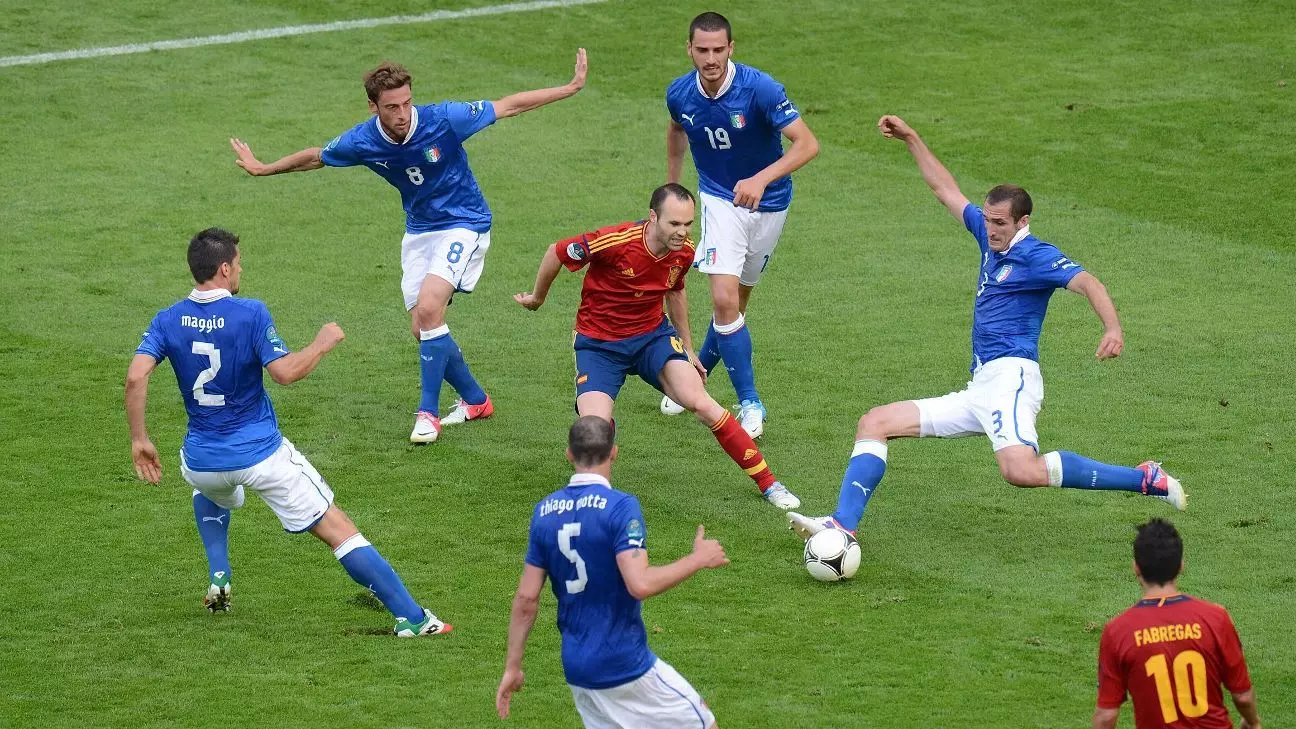On a poignant Tuesday in October, football bids farewell to Andrés Iniesta, a luminary in the world of football. After a storied career that spanned over two decades and crossed more than 1,000 appearances, Iniesta announced his retirement at the age of 40. His departure marks the end of an era defined by artistic mastery on the pitch and a plethora of accolades amassed during stints at FC Barcelona and the Spanish national team. Few players can lay claim to such a decorated resume, yet Iniesta’s magnificence extends far beyond mere statistics.
With a trophy cabinet that boasts a FIFA World Cup, two UEFA European Championships, and a staggering four UEFA Champions League titles among a total of 38 trophies, Iniesta’s influence on the game is immense. Embodying creativity and artistry, he not only dazzled fans but also instigated awe from players and coaches alike. Recognized as a visionary playmaker, he captivated audiences with his ability to glide through defenses and deliver incisive passes. Iniesta’s former teammate, David Silva, once claimed he was the finest player in the game—an endorsement that highlights his enduring legacy in football.
Iniesta’s ascent to footballing greatness was destined from an early age. As a youth player, he garnered attention through his performances in pivotal tournaments, most notably the 1996 Brunete Championship, where he was named MVP at just 12 years old. His prodigious talent earned him a spot at Barcelona’s famed La Masia academy shortly thereafter. By 15, he had already caught the eye of then-Barcelona midfielder Pep Guardiola, who foresaw a bright future for the young maestro.
Iniesta’s career is punctuated by legendary moments that cemented his status among the all-time greats. One of the most dramatic instances occurred during the Champions League semi-final against Chelsea in 2009, where his late equalizer not only saved Barcelona from elimination but also inspired a remarkable resurgence that saw them reach the final—the Iniestazo, as it became known, gave rise to a notable baby boom in Catalonia. Fast forward to the 2010 World Cup, where he stepped up to the plate once more, scoring the pivotal goal in the final against Netherlands that brought home Spain’s maiden World Cup trophy.
Though Iniesta’s momentous achievements in tournaments are noteworthy, it is the beauty of his play that truly distinguishes him. During the 2012 European Championship, he was an indomitable force, earning the tournament’s MVP award after reinforcing Spain’s dominance on the international stage. In a particularly iconic image, he was seen fending off five defenders, showcasing his uncanny ability to thrive under pressure and command the game.
However, this brilliance was not limited to grand tournaments. In a memorable encounter against Paris Saint-Germain in 2015, even seasoned spectators were left breathless by Iniesta’s escape from four defenders before setting up a crucial goal. It symbolized the very essence of his career—a dancer on the pitch, effortlessly weaving through adversaries while knitting together the team’s play.
Beyond the accolades and on-field brilliance, Iniesta exemplified grace and humility, earning the adulation of fans across rival territories—including Real Madrid’s Santiago Bernabéu, where he received a heartfelt ovation during an El Clásico match. Such gestures epitomize the essence of his career; he transcended club rivalries, emerging as a beloved figure across the footballing spectrum.
As Iniesta approached the twilight of his career, he maintained a masterclass standard of play, even as father time loomed large. In his farewell match for Barcelona at the Copa del Rey final in 2018, Iniesta delivered a breathtaking performance, reminding the world of his unique talent as he orchestrated the game and netted a memorable goal, further endearing himself to his fans and leaving a rich legacy behind.
As he heads into retirement, the mastery of his signature skill—“La Croqueta”—remains in the memories of all who witnessed it. This deft maneuver showcased his brilliance and ability to alleviate pressure, encapsulating why he will forever be seen as one of football’s true artisans.
In the end, while numbers and trophies define a player’s career, it is the moments of enchantment—like those witnessed whenever Iniesta stepped onto the pitch—that create lasting legacies. As we contemplate Iniesta’s illustrious career, we bid adieu to a player who was not merely a participant but a creator of beautiful football, leaving the game richer for his presence.

